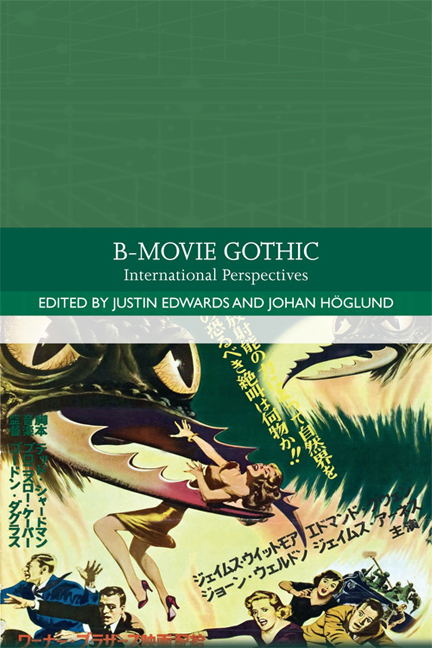1 - Its, Blobs and Things: Gothic Beings Out of Time
Published online by Cambridge University Press: 06 May 2021
Summary
It walked in the woods.
It was never born. It existed. Under the pine needles the fires burn, deep and smokeless in the mold. In heat and in darkness and decay there is growth. There is life and there is growth. It grew, but it was not alive. It walked unbreathing through the woods, and thought and saw and was hideous and strong, and it was not born and it did not live. It grew and moved about without living. (Sturgeon 1993 [1940], 303)
This passage from Theodore Sturgeon's story ‘It’ (1940) anticipates the Gothic phenomena of 1950s b-movie schlock: those Its, Blobs and Things that come from some other place – the void of outer space or the mysterious black lagoon – and threaten to disrupt the everyday life of middle America. As in the unabashedly camp movie Swamp Thing (1982), the ‘It’ of Sturgeon's story is a massive creature of organic matter. It is a colossal, powerful and destructive veggie-monster-Thing comprising the moss and mould that has accumulated over decades on the soil of a boreal forest. It gives off the fetid odour of rotting plants and drops ‘little particles of muck behind it’ as it lumbers through the growth, leaving behind a trail of mulch (318). This ‘thing of the mold’ does not eat (318). It does not breathe. It does not sleep. It cannot be shot or stabbed. It does not distinguish between tree life, canine life and human life. It kills out of curiosity. It is unnameable because it defies classification: it is decay alongside growth, movement without life, strength without solidity, maturity without birth. It is a Thing that confounds ontological and phenomenological conceptions of being or sentience. It is outside human-centred relationships or anthropocentric conceptions of the biosphere. It is a non-human object that threatens life and cannot be enframed by the subject through an ordering for human use or even categorised within language.
Most important, though, is that Sturgeon's veggie-monster is outside of what we often conceptualise as a coupling of being and time. This Thing cannot distinguish between day and night; it must learn that perception is altered with the passing of the sun. The time-cycles of sleeping and waking, hunger and sustenance, do not apply. And temporal units of time – seconds, minutes, hours – or the marking of events in reference to time occurrences have no currency.
- Type
- Chapter
- Information
- B-Movie GothicInternational Perspectives, pp. 17 - 31Publisher: Edinburgh University PressPrint publication year: 2018



